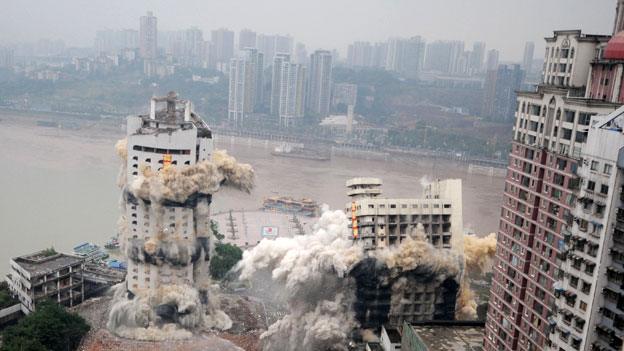Noida twin towers demolition: How explosives will bring down skyscrapers
- Published
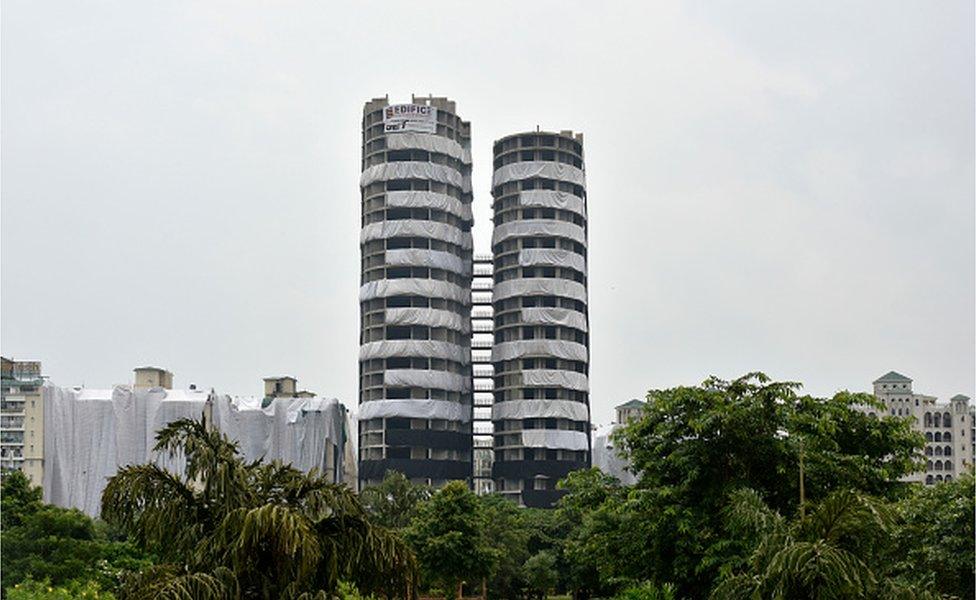
The Supreme Court ordered the two towers to be torn down as they violated building rules
In an estimated 12 seconds, two skyscrapers near the Indian capital, Delhi, will be demolished by implosion on Sunday afternoon.
The two cheek-by-jowl towers called Apex and Ceyane - which were built by a private developer called Supertech and later found to be in violation of building norms - will be the country's largest skyscrapers ever to be imploded.
The 'Twin Towers", as they are rather curiously called by the media, rise to more than 320ft (97m) and 30 storeys in a densely populated neighbourhood in the city of Noida.
Some 3,700kg of explosives will power the implosion - getting an edifice to collapse on to itself - in what will be a highly skilled job involving engineers from at least three countries. One engineer has called it a "beautiful feat of engineering".
Such demolitions are generally not permitted or are rare in densely built areas around the world. That makes Sunday's demolitions especially challenging.
Consider this. A 12-storey inhabited building stands barely 30ft (9m) from the two towers. Around 7,000 people live in some 45 condominium buildings on either side of the towers.
All humans and pets in these buildings will have to evacuate early on Sunday morning. They will only be allowed to return to their homes five hours after the implosion. Stray animals will be scooped off the streets and put in animal homes. Traffic in the area and on a key expressway will be halted. The implosion is likely to whip up a cloud of dust rising to 984ft (300m) from the ground, so airports and the air force have been told to ensure safety of flights.
That's not all.
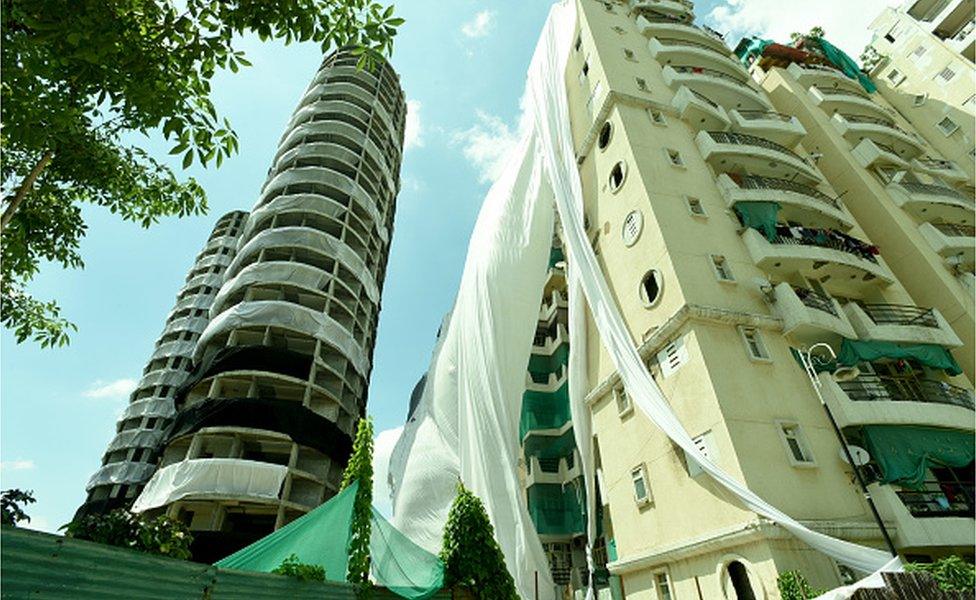
The nearest inhabited building is barely 9m away from the demolition site
Some 50ft (15m) from the demolition site is an underground pipeline which supplies cooking gas to Delhi.
People living in the neighbouring buildings have expressed worries that the vibrations from the implosion could damage their structures.
But engineers involved with the demolition say there's nothing to worry about.
Buildings in Noida are designed to withstand earthquakes. British engineers who are helping with the demolition have calculated that the blast will trigger vibrations which will be a tenth of a quake measuring four on the Richter scale. Also, the basements of the "Twin Towers" will be stuffed with loose debris to absorb the vibrations.
"It's all safe," says Mayur Mehta, a senior engineer at the site.
On Sunday, six people, including three men in charge of the explosion - also called "blasters" - and a police officer will be allowed inside what authorities call an "exclusion zone" to set off the explosions, which will see the towers implode simultaneously.
The blast will be triggered using a mix of explosives, including emulsions. Helping the ignition will be detonators with time delays of milliseconds and plastic tubes to transport signals to the explosives - loaded in the two connected buildings - by means of shock waves.
"It's not going to be a free fall," says Uttkarsh Mehta, founding partner of Edifice Engineering, the Delhi-based firm carrying out the demolition. "We will be actually blasting 18 of the 30-odd floors. The rest will come down on their own. We call it a cascading 'waterfall implosion'. Gravity always helps."
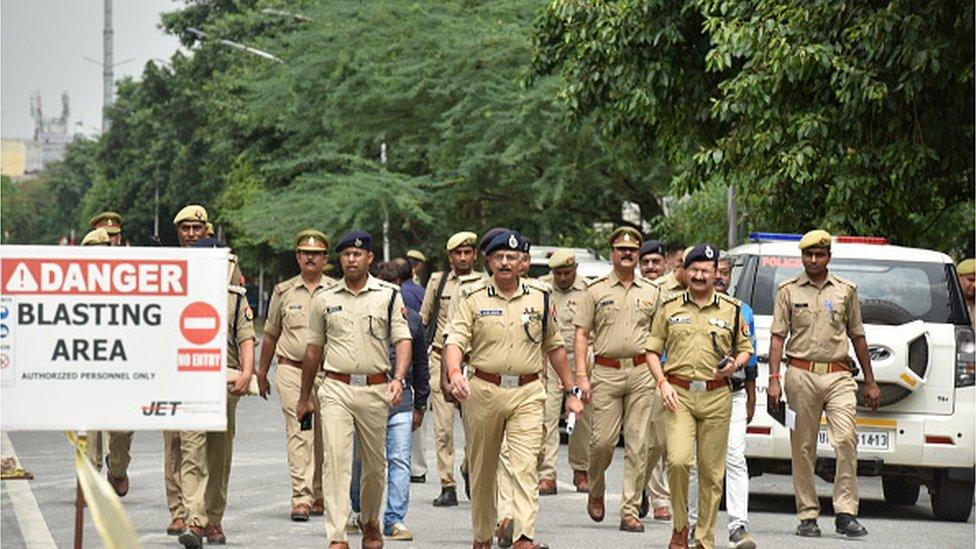
Police will cordon off and vacate the area on the morning of the demolition
For weeks, the "blasters" have been walking up and down 30 storeys of the two buildings - the power supply has been cut and escalators disconnected - to load them with explosives and make sure that more than 20,000 such connections within and between different floors are in order. A glitch could leave the implosion incomplete.
Yet this might not be the most challenging job for Mr Mehta's 11-year-old company. As India steps up infrastructure building, the firm says it is doing 18-20 demolitions at any given time, knocking down old airport terminals, a cricket stadium, bridges and old industrial chimneys at one of India's top steel plants. A tougher job, he says, was demolishing an old bridge over the Ganges in Bihar over three years, where engineers had to make sure that none of the debris fell into the river below.
After the "Twin Towers" come down on Sunday, an estimated 30,000 tonnes of debris will gather at the bottom - scaffoldings have been put up to ensure that it does not fly around and hurt people or damage property. Some 1,200 trucks will carry the rubble from the site to a recycling plant over at least three months. "The dust will settle quickly, but debris will take a while to remove," Mr Mehta says.
Demolitions of skyscrapers are not common in India. In 2020, authorities in the southern state of Kerala demolished two luxury lakeside apartment complexes - home to about 2,000 people - that were built in violation of environmental rules. But the Noida demolitions are unprecedented in terms of scale and the anxieties they have generated.
People living in adjoining buildings have already begun leaving their homes to move in with friends and relatives in the city.
"People are sealing their doors and windows, covering their air-conditioners, taking off TVs from walls and cabinets. We are locking the buildings. This kind of thing has never happened before," says SN Bairoliya, who heads an association responsible for managing the day-to-day affairs of a neighbouring building.
The upscale skyscrapers had once promised prospective buyers a life of unalloyed luxury. Supertech had pledged that Ceyane would an "iconic" 37-storey high-rise, and the view from Apex "as you partied" in the balcony would be a "glimmering city" below.
On Sunday, all such promises will be finally ground into the dust.

You may be also interested in this story
Luxury high-rise blown up over environmental violations

Read more India stories from the BBC:

Related topics
- Published11 January 2020
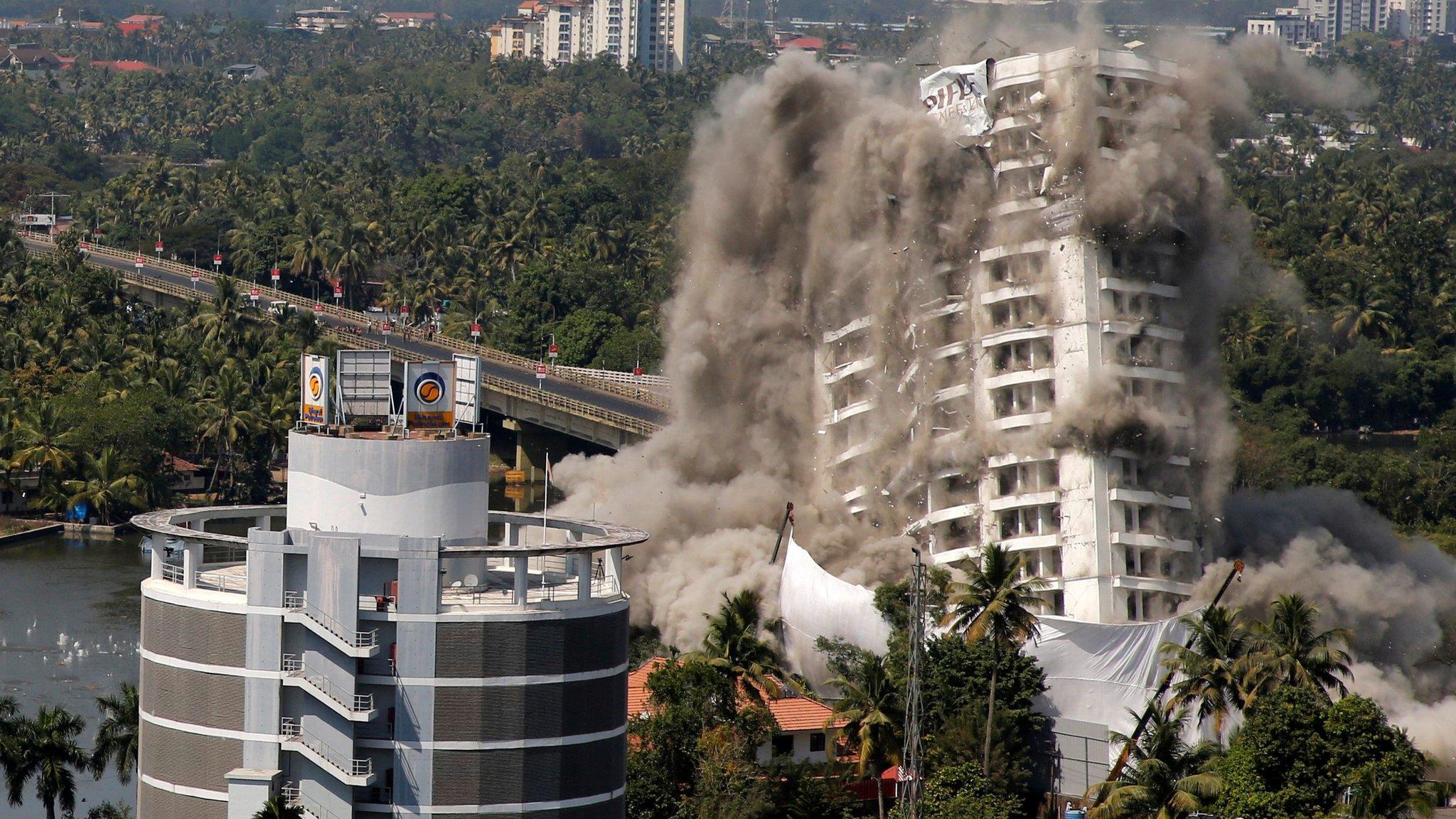
- Published30 November 2012
